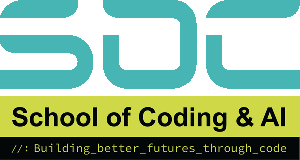Introduction
Java is more than a programming language; it’s the foundation for enterprise apps, Android development, and sophisticated backend systems. However, mastering the fundamentals is insufficient for prospective developers. You must understand advanced Java programming approaches to stand out and create high-performance, scalable, and secure apps.
At SOC Learning, we’re dedicated to assisting future developers in outperforming the competition. In this post, we’ll look at 9 game-changing advanced Java programming techniques that can take your coding skills from average to exceptional. Whether you’re looking for a top position in technology or developing your creative software, these tactics will offer you the advantage you need now, not tomorrow.
So, grab some coffee and plunge in!
Why Learn Advanced Java Programming Techniques?
Before we get into the strategies, let’s talk about why advanced Java is important.
- In-Demand Skill: Java is still one of the top three most popular programming languages worldwide (TIOBE Index 2025).
- High Pay: Java engineers in the UK earn an average annual pay of £55,000+, with senior roles topping £80,000.
- Java is versatile: It is powering online and mobile apps, banking systems, and AI.
- Job security: Companies like Amazon, Google, and IBM rely significantly on Java for their core systems.
Mastering advanced approaches not only improves your code but also offers new opportunities.
9 Advanced Java Programming Techniques Every Aspiring Developer Must Know
1. Generics and Type Safety
Avoid ClassCastException mistakes! Generics help you develop cleaner, type-safe code.
List names: new ArrayList<>();
Benefits:
- Improves code readability.
- Reduces runtime errors.
- Improves IDE support for autocompletion.
Wildcards (, , ) provide maximal freedom when working with generic types.
2. Concurrent and Multithreading
Want apps that are faster and more responsive? Learn how to run tasks in parallel using threads and executors.
ExecutorService executor = Executors.newFixedThreadPool(5); executor.submit(() -> System.out.println(“Running in thread”);
Best Practices:
- Prevent thread leaks by turning down executors.
- Use synchronised blocks and locks to avoid race conditions.
- Investigate java.util.concurrent utilities such as CountDownLatch and Semaphore.
Apps that use multithreading efficiently can boost performance by up to 70% on multi-core CPUs.
3. Exception Handling the Right Way
Stop catching Exceptions blindly! Utilise bespoke exceptions and structured error-handling solutions.
A public class The class InvalidUserInputException extends RuntimeException { public InvalidUserInputException(String message) { super(message); } }.
Why it matters:
- Ensures a clear separation of concerns.
- Makes debugging much easier.
- Helps design more resilient software.
4. Java I/O and NIO expertise
File management and network I/O are vital. Learn about conventional I/O (java.io) and non-blocking I/O (java.nio).
Path path = paths.get(“file.txt”);
List lines = Files.readAllLines(path);
NIO technology revolutionises high-performance servers. It can handle thousands of connections without interrupting threads.
5. Reflection and Annotations
Reflection allows you to observe and alter classes at runtime, making it ideal for frameworks such as Spring and Hibernate.
Class Clazz = Class.forName(“com.example.MyClass”);
Method[] Methods = Clazz.getDeclaredMethods();
✅ Combine with annotations to develop pluggable code that adjusts without modifying source files.
Caution: Reflection is strong, but excessive use can lead to performance concerns and security vulnerabilities.
6. Design Patterns for Java
Design patterns represent tried-and-true solutions to prevalent issues. Learn at least these five:
- Singleton
- Factory
- Observer
- Strategy
- Decorator
They facilitate code reuse, flexibility, and clean architecture. Begin recognising them in real-world libraries!
7. Functional programming in Java 8+
Java 8 introduced lambdas, streams, and functional interfaces, which transformed the way we write code.
List<String> filtered = names.stream()
.filter(name -> name.startsWith(“A”))
.collect(Collectors.toList());
Functional programming improves:
- Code brevity
- Parallelisation using.parallelStream()
- Testability and predictability.
8. Memory Management & Garbage Collection
Although Java handles memory automatically, understanding how the JVM manages memory allows you to create more efficient apps.
Learn about:
- JVM memory regions: heap, stack, and metaspace.
- GC algorithms: serial, parallel, and G1.
- Profiling tools: VisualVM and JConsole
A memory leak in Java does not cause an abrupt crash, but rather gradually lowers performance. Always profile long-running applications.
9. Create scalable APIs with Java Frameworks
Learn how to create RESTful APIs using Spring Boot. @RestController public class HelloController { @GetMapping(“/hello”).
The public String sayHello() function returns “Hello, World!”.
- Spring Boot’s key feature is auto-configuration.
- An embedded server
- Production-ready metrics
- A vast ecosystem
According to JetBrains’ Developer Ecosystem survey, Spring is used by over 60% of Java developers globally.
Bonus Tip: Build a Portfolio with These Skills
Use services such as GitHub to demonstrate:
- RESTful Spring Boot API
- A multithreaded file processor.
- A memory-efficient data processing application.
- Employers prefer to see proof of expertise.
At SOC Learning, our Java courses include hands-on projects that businesses genuinely seek.
Conclusion
Becoming a master developer requires more than simply tutorials; it also requires deliberate study, practice, and proper supervision. These advanced Java programming approaches will make your code faster, clearer, and more future-ready.
If you’re looking to accelerate your Java career, SOC Learning’s expert-led courses will provide you with the tools and projects you need to get industry-ready quickly.
Don’t only learn Java. Live it. Create a code. Master it.
Discover our Java and AI-powered coding programs at SOC Learning and begin your career revolution today.
Frequently Asked Questions (FAQs)
Compared to many other programming languages, Java is frequently regarded as being beginner-friendly. It is accessible because to its extensive documentation, English-like syntax, and ease of use. However, the level of difficulty changes depending on the Java feature you are learning:
- For novices, the fundamental ideas (loops, conditionals, and simple classes) are simple.
- More practice is needed for intermediate topics, including file I/O, exception handling, and object-oriented design.
- Because they require knowledge and logical thinking, advanced topics like networking, design patterns, multithreading, and frameworks might be difficult.
In the end, Java is not “hard” if done gradually. It becomes a very gratifying language to learn with constant effort.
You should be comfortable with:
- Object-Oriented Programming (OOP)
- Core Java concepts like classes, inheritance, and basic collections
- Basic I/O and exception handling
Java is an object-oriented programming language that is utilised in many different sectors. Because Java apps can operate on any device with a Java Virtual Machine (JVM), its “write once, run anywhere” feature makes it incredibly flexible.
- Enterprise Software: Java is used by developers to create enterprise software, which is used by banks, healthcare organisations, and global enterprises to create scalable and secure applications.
- Mobile apps: Android, the platform that powers most smartphones globally, is developed using Java.
- Web applications: frameworks like Hibernate and Spring enable programmers to build reliable and dynamic web platforms.
- Game Development: Java offers libraries and engines that facilitate the creation of interactive games.
- Cloud computing and big data: Java’s smooth integration with Hadoop and AWS makes it useful for cloud services and data analytics.
In short, Java is a backbone language that continues to power essential software solutions globally.
Indeed, Java is still one of the most useful programming languages available today. Java is essential due to its robust community, frequent updates, and widespread use, even when newer languages are joining the market. It is still relevant for a number of reasons, including:
Industry demand: Java is still widely used by Fortune 500 businesses, governmental organisations, and IT behemoths.
Android dominance: Java is utilised extensively in Android apps, which are used by billions of people.
Stability and longevity: Java has demonstrated dependability over the course of its more than 20 years of development.
Compatibility with contemporary technologies: Cloud-based systems, machine learning, and artificial intelligence all commonly employ Java.
To put it briefly, Java is still relevant and keeps changing to meet the demands of contemporary software development.
You can begin learning Java in a variety of methods, from organised courses to internet resources:
- Online platforms: Java classes ranging from beginner to advanced are available on websites such as Codecademy, Udemy, and Coursera.
- Official documentation: Oracle offers thorough, industry-standard Java courses for free.
- YouTube and coding groups: There are innumerable free tutorials, conversations, and movies on problem-solving on YouTube and in coding groups.
- Books: For a deeper knowledge, classics like Head First Java and Effective Java are great.
- School of Coding & AI: For students in the UK and abroad, our professionally guided programs offer practical instruction, project-based learning, and mentorship to guarantee that you acquire Java skills that are both technical and employable.
With consistent effort, you can master the essentials in 3 to 6 months. Build projects, read documentation, and engage with communities.
Absolutely! Android is written in Java (and Kotlin), and many backend and system-level optimisations rely on sophisticated techniques.
Yes!
- Java is more performant for backend development.
- Extensively utilised in enterprise applications.
- Critical for Android and large-scale systems.
You’ll need to apply your knowledge through real-world projects, soft skills, and an understanding of databases, APIs, and software engineering methods. But, yes, Java skills may lead to high-paying work in the UK and elsewhere.
The time needed to learn Java depends on prior coding experience and the depth of knowledge desired. Beginners with no coding background may take six to nine months to grasp the fundamentals, such as variables, loops, classes, and inheritance. Those with prior programming experience can often become comfortable with Java in three to six months, as they already understand concepts like logic building and syntax. Mastering advanced Java (including multithreading, networking, data structures, and design patterns) can take a year or more, especially when combined with practical project work. Consistent practice, building small projects, and participating in coding challenges significantly accelerate the learning process.








